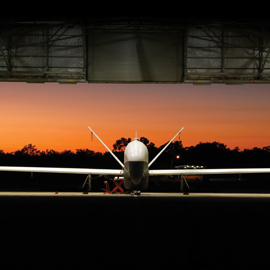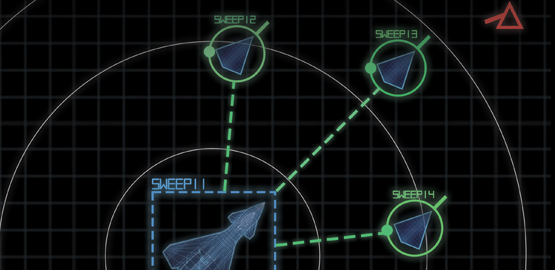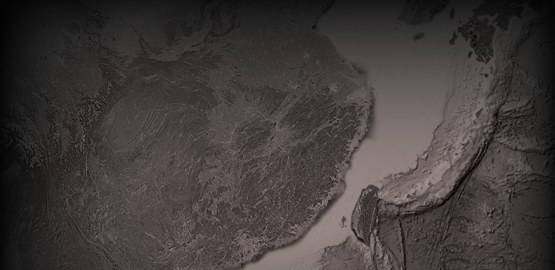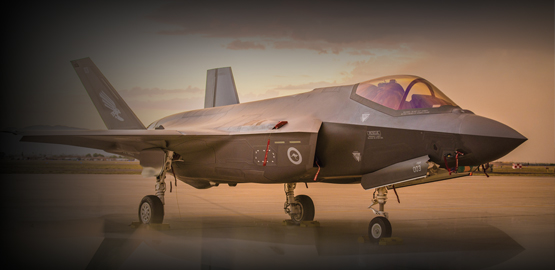Xi Jinping wants China to have a “world-class military” by the middle of the century. While the country has undergone a historic military modernization effort in the last two decades, the People’s Liberation Army (PLA) remains a regional military power, albeit one with growing ambitions to achieve regional dominance and expand its ability to project power around the globe.
Is Xi’s dream of a world-class PLA realistic? His vision largely depends on PLA efforts to increase jointness and achieve intelligentization.
By all accounts, the Chinese military is on the march. The PLA’s annual budget grows at a rapid pace year after year. The PLA Navy is now larger than the U.S. Navy. “Carrier-killer” missiles attempt to threaten America’s ability to project power in the Indo-Pacific. The PLA’s increasingly sophisticated nuclear arsenal grows at an alarming pace. But these raw numbers alone do not capture some of the more subtle measures of warfighting capabilities, such as organization, training, education, and doctrinal concepts. These seldom noted yet critical measures of military power may tell a different story about the PLA’s pace of growth and ability to achieve its ambitions.
A close look at some aspects of military modernization progress that are harder to measure shows that the PLA still faces some significant, but not insurmountable, issues in catching up with the U.S. military. Specifically, the PLA’s ongoing struggles to embrace jointness among the service branches, as well as the challenge of updating doctrine to reflect the implications of their belief in a military revolution through artificial intelligence, reveal nuances that are crucial for a broader understanding of the Chinese military. Despite its continued growth, the extent to which the PLA can handle the less tangible side of military modernization will be vital for the Chinese military’s future warfighting capabilities.
The PLA’s apparently growing prowess coupled with persistent challenges leaves a Chinese military akin to Schrodinger’s cat. In the famous physics thought experiment, a hypothetical cat located inside a box with poison may be considered simultaneously both alive and dead until confirmed by observation, made when opening the box. The rapidly-expanding PLA remains untested on the modern battlefield, leaving both internal and external observers uncertain about China’s true warfighting capabilities. This dilemma means that analysts should carefully watch for any signs of progress in the Chinese military’s continued development, beginning with the PLA’s commentary about itself.
Ongoing Difficulties with Jointness
Since his ascent to the leadership of the Chinese Communist Party and the PLA, some of Xi’s primary governing priorities have been to complete the PLA’s modernization by 2035 and become a “world-class military” by 2049. Jointness is at the core of these efforts. “Jointness” refers to the process of integrating each of the military services together into a cohesive whole with the sum greater than its parts. Effective joint operations allow the service branches to emphasize their strengths and mitigate their weaknesses. Promoting jointness, however, requires cultivating a joint culture, breaking through parochial service interests, and coordinating disparate operational efforts, among other challenges.
Beginning in 2015, Xi unveiled sweeping military reforms that sought to prepare the PLA institutionally for a joint future. These reforms included creating a new command-and-control structure, replacing regional commands with a theater command system, shrinking the size and influence of the army, establishing the Strategic Support Force, and enhancing cadre training and education, and other efforts. These changes have been well-documented and are a crucial foundation for the PLA’s fighting abilities.
However, Chinese strategists believe that the PLA is having a difficult time integrating jointness into the force despite continued efforts. For the past five years, Chinese commentators have written in academic journals, news sources, and popular media about Xi’s efforts to make the PLA into a truly joint force, and they conclude that China still has a long way to go to achieve its ambitions. They complain about interservice rivalry, technological issues, and ineffective operational commanders.
Chinese authors write consistently that the PLA’s services are at each other’s throats. This diagnosis is captured with pithy phrases like “mountain-stronghold mentality [山头主义]” or “each fights the others [各自为战].” These complaints point to the ongoing importance and difficulty for the PLA of shrinking the size and influence of the ground forces, especially since the army is notoriously parochial and views itself as the preeminent branch. Chinese strategists know how daunting it will be to encourage the services to get along.
Additionally, Chinese authors see ongoing technical challenges in advancing a joint force. One of the most important steps to ensure the services can work together is guaranteeing that technologies among the services are compatible, resulting in improved interoperability. Chinese strategists write that the PLA needs a “unified information technology system standard” to achieve its jointness goals.
Lastly, Chinese commentators believe that mid-level operational commanders are not properly equipped for modern warfare. This worry is captured by the phrase, “Five Incapables [五个不会].” This official Chinese slogan declares that officer cadres cannot correctly judge battle situations, do not understand central leadership intentions, are unable to make operational decisions, cannot deploy troops, and are unable to deal with emergencies. Xi himself has emphasized this theme, and he believes this problem is of paramount importance for the PLA to overcome. In fact, it has been the most frequently used slogan in the PLA since 2015. This shows the extent to which diagnoses of PLA limitations predominantly come from the political leadership instead of from the military itself.
These concerns about the PLA reflect real issues. There are many observable symptoms of the PLA’s jointness challenges that confirm party leadership suspicions. For example, one of the PLA’s foremost military institutions, the National Defense University, recently launched a Joint Operations Academy that appears to be undergoing a kind of curriculum revolution. The academy is meant to be on the cutting edge of training cadres for joint warfighting. In practice, this means that it is undergoing immense change at a rapid pace. The curriculum has changed constantly since its founding in 2017. This pace of change has irritated students and teachers alike, with professors complaining that they no longer know what to teach their military students about joint warfare. If the National Defense University is having a difficult time training its students for jointness, then the other military universities and training commands likely face similar problems.
Another example comes in the promulgation of new jointness doctrine. In November 2020, the PLA unveiled what it called an “outline” for joint operational guidelines, regulation, and doctrine moving forward. While the document is not public, the government has made clear that the outline is meant to establish basic rules and guidelines for joint warfighting. The outline is a sign that the PLA continues to take jointness reforms seriously, although they remain only in the preliminary stages of implementation. Most of the PLA’s officers have limited actual experience with conducting joint operations. It will be years until most PLA soldiers are intimately familiar with the other service branches and can determine how to work well together.
A Chinese military that diagnoses and confronts its own clear flaws may well be able to summon the necessary efforts to enact the difficult changes it needs to achieve jointness. Thus far, the PLA appears to have messaged that it is advancing necessary reforms. Much will depend on its ability to continue the pace and depth of reforms, even as it attempts to increase use of AI for future warfare.
Visions of a Military Revolution via AI: A Risky Approach
As Chinese officials, military strategists, and analysts admit, the PLA has a long way to go to become a joint force, but not for lack of effort. Many Chinese strategists are looking toward the future for new operational concepts and theories to help the army accelerate its efforts to become a world-class military. At the center of these public discussions is a new and little-understood concept called “intelligentization (智能化),” which represents a new goal for the PLA’s progress in modernization.
Chinese discussion of intelligentization reveals the seemingly boundless hopes that Chinese analysts have for the potential of futuristic technology. They call for the integration of AI to give superior decision-making capabilities to the operational commander, and for enlightened autonomous weapons systems to replace humans on the battlefield. The PLA believes not only intelligentization could provide the solution to its difficulties with jointness, but also that it will fundamentally change future warfare and provide a rare opportunity to leapfrog its development over that of Beijing’s adversaries. However, hidden behind Chinese analysts’ hopes to achieve their own revolution in military affairs are multiple potential and real challenges that could complicate Chinese technologically based military dominance.
First, Chinese theorists’ discussions about intelligentization overwhelmingly call for highly centralized decision-making structures. These strategists want operational commanders advised by advanced algorithms to perfectly direct intelligent swarms of autonomous battle systems to achieve campaign objectives. Chinese theorists believe this approach will consolidate command responsibility onto a few generals who can remain safely away from the frontlines of the battlefield, which is antithetical to the modern concept of mission command. In this situation, though, the failure of any operational commander could be crippling in a wartime scenario, and Chinese theorists do not appear to recognize this risk — at least compared to the perceived gains.
Second, theorists of intelligentization seem to miss the inherent fragility that remains in AI and autonomous systems. The future PLA that Chinese strategists describe is based almost entirely on advanced technology, with little discussion about potential risks and mitigation approaches. If these ambitions are realized, a well-placed electronic warfare attack from an adversary could severely hamper the PLA’s command of its forces.
Lastly, Chinese strategists discussing intelligentization appear to have too much faith in the capabilities of AI and advanced technologies. These writers argue that autonomous systems will eventually be better at making decisions than humans. They go so far as to claim that future warfare will come to closely resemble depictions from the Star Wars movies.
Although advancements continue, many non-technologists continue to overestimate the ability of AI to make decisions. While AI hype may be starting to wane amidst the recognition that AI is “neither artificial nor intelligent,” the PLA does not yet seem to have acknowledged or digested this skepticism. Future Chinese autonomous systems will inevitably reflect the designers’ biases of what a war would look like, as well as the training data used to develop underlying rulesets. In the chaos of combat operations in future warfare, autonomous systems will face unexpected challenges that will not be fully accounted for by the AI’s designers, and that can only be properly addressed through human ingenuity. As intelligentization efforts proceed and more command decisions can be delegated to machines, the PLA will also need to enhance the technical proficiency of its officer and enlisted corps to continue developing and applying AI to warfare. Paradoxically, this could result in a greater split among the PLA’s manpower, with corps members underqualified for the technical aspects and underutilized because of automated decision-making.
PLA overconfidence in the potential of futuristic technology carries various risks that could weigh on the its warfighting capabilities. Whereas popular discussion within China heralds the PLA’s technological capabilities and advancements as a game-changing shift in future warfare, these new technologies are only as useful as they are manifested and effectively applied in Chinese warfighting doctrine. It is important for outside observers to understand that intelligentization may not deliver all the advantages the PLA hopes for.
An Uncertain Future
So, ultimately, which is it? Is the PLA on the verge of regional (and eventually global) dominance based on advancing military effectiveness? Or is it still struggling to advance its most basic jointness goals and overplaying its reliance on technology? The answer is uncertain. Observing and measuring the progress of development for any military is a difficult proposition, but it is substantially more challenging due to the opacity of China’s Leninist one-party system. Understanding the future warfighting ability of the PLA requires parsing the often inconsistent, contradictory, and confusing environment that China offers to outside observers. These challenges are further multiplied by the fact that the Chinese army has no real-world options to truly test its advancing capabilities while still ensuring necessary battlefield successes.
It is nonetheless clear that the PLA still lags in a couple of key metrics of warfighting capabilities. Its attempts to integrate jointness into the force are still nascent and largely without tangible successes to help accelerate further change. Chinese military theorists’ visions of intelligentization appear to overestimate the transformative potential of AI and could set the army up for failure in the long-term. Both jointness and intelligentization will be an albatross on the PLA as its responsibilities and mission sets widen to reflect the communist party’s rapidly expanding global ambitions.
The persistent challenges and ambiguities in China’s military development illustrate the importance of understanding the oftentimes underrated, and more difficult to measure, aspects of military power. The PLA’s ability to manage these contradictions will be crucial as it continues its modernization efforts to achieve its future warfighting ambitions. Western analysts should closely watch the subtle measures of military power to see past the often-simplistic headlines of the PLA’s modernization.
The PLA needs to attempt intelligentization to mitigate some of its own shortcomings, particularly for command and control, and to compete with other efforts underway by its rivals, principally the United States. Even if successful, however, achieving intelligentization will open the PLA to an entirely new set of vulnerabilities that may reduce any effective advantage attained. Although the PLA will continue to demonstrate some limited combined arms operations, holistic jointness is likely to remain a mirage for the foreseeable future due to the services’ deep-seated cultures and rivalries.
Even if the PLA can overcome its internal challenges, success in war will remain uncertain. Ultimately, victory on the battlefield depends on where the battle is fought and against whom. China is increasingly becoming a formidable military adversary in the Western Pacific. Although the possibility of the PLA becoming “world class” by Xi’s own criteria seems unlikely, the U.S. military and key allies will have their hands full in a contingency inside the first and second island chains of the Indo-Pacific. Perhaps only opening Schrodinger’s box, with real combat experience, will reveal the PLA’s actual progress in achieving its modernization goals.



























